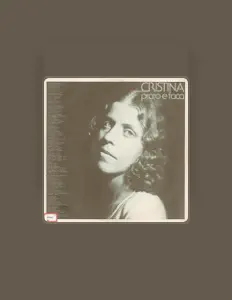

About Aldir Blanc

Hometown
Rio De Janeiro, Brazil
Born
September 2, 1946
Genre
MPB
Aldir Blanc was born in the neighborhood of Estácio, and lived there and in Tijuca; he soon displayed an unusual interest in the written word, and began writing lyrics. At 17, he learned how to play the drums and formed the Rio Bossa Trio, who routinely accompanied novices on a TV show. Entering medical school, Blanc started to appear at the festivals on the University circuit. In a time of dictatorial ruling, this circuit was an important catalyst for cultural manifestation. Other musicians who became well-known because of their appearances in the University festivals include Ivan Lins, Luiz Gonzaga Júnior, and César Costa Filho. At the end of the '60s, Blanc began a partnership with violonista (acoustic guitar player) Sílvio da Silva Jr. and the duo performed some songs which were well-rated in the festivals. In 1968, Blanc's composition "A Noite, A Maré e o Amor" (with da Sílva) received a good rating at TV Globo's III FIC. At the 1969 II Festival Universitário de MPB in Rio de Janeiro, he classified three songs: "Nada Sei de Eterno" (with Sílvio da Silva Jr.), sung by Taiguara; "Mirante" (with César Costa Filho), in the voice of Maria Creuza, and "De Esquina em Esquina" (with César Costa Filho), interpreted by Clara Nunes. At 1970s V FIC he classified "Diva" (with César Costa Filho). In that same year he disputed the II Festival Universitário de MPB with "Amigo é Pra Essas Coisas" (with Sílvio da Silva Jr.). After da Sílva moved to Mexico, Blanc was introduced to João Bosco, a young fellow who had just arrived from Minas Gerais on vacation; Bosco liked music, played violão, and had written some songs. The two became friends and started to write some songs together. Bosco continued to live in Minas, so their partnership was achieved primarily through correspondence, until each vacation period. Then Blanc would go to Ouro Preto and meet Bosco to show him the lyrics for "Angra" and "Agnus Sei." In 1971, Elis Regina recorded "Bala Com Bala" (written by the duo and César Costa Filho), which is an important landmark in their career. In 1972, the duo won a Pasquim contest hosted by an important yet humorous critical tabloid, written by artists and intellectuals denouncing dictatorship. The "prize" or award for their efforts was the recording of the song in the first Disco de Bolso record series. The acclaimed composer Sérgio Ricardo (who would break his violão in protest and throw it at the audience during the II FMPB, 1967 festival), came up with the idea of the Disco de Bolso series to promote new talents of MPB. Each Disco would feature an established artist on one side, and a new artist on the other. For the first LP in the series, the established artist chosen was Tom Jobim, and the new one, João Bosco. With the resulting national distribution of Bosco's work, Blanc and Bosco were ready for the big time. The pair decided to go "professional." Bosco moved to Rio, where he had already been hired by RCA Victor to record an LP featuring the duo's compositions. It was 1973. Professionally, Bosco was already an engineer, and Blanc a psychiatrist when they decided to dedicate themselves exclusively to music. The songs recorded on that first RCA LP included "Agnus Sei," "Bala Com Bala," and "Cabaré," among others. In 1974, Blanc created the Sombrás, a group of musicians united by the ideal of fighting the theft of authorship rights. In that same year, they'd have another push from Elis Regina, an interpreter who generously promoted several other young composers. This time, she released a new LP through Phillips with songs by the duo, such as "O Mestre Sala Dos Mares," "Dois Pra lá, Dois Pra Cá," and "Caéa a Raposa." The first song here, "O Mestre Sala Dos Mares," is a tribute to sailor João Cândido in the form of a samba "enredo" -- a style traditionally linking the song to facts, events, and figures in Brazilian history; the term was already being used to designate any small orchestra with a soloist instrument which performs popular music, especially in the open.
João Cândido was a member of the crew of Minas Gerais' heavily armed battleship; Gerais led a mutiny in 1910. Taking control of the ship, the crew pointed its cannons towards the city of Rio de Janeiro, demanding the ending of brutalities against Navy crews along with amnesty for the insurgents. The government promised to comply, but when the ship moored, the crew were attacked by troops who killed most of them and exiled the rest to Acre. João Bosco recorded this tale on RCA's Caéa a Raposa, with "De Frente para o Crime," "Kid Cavaquinho," and others. The Elis label then recorded one of the biggest hits by the duo, "O Bêbado e a Equilibrista." Recorded in 1975, this album and single mark the beginning of a stable and successful musical career for the duo. The great dame of choro, Ademilde Fonseca, who had made her debut in 1942, was already out of the musical scene, and had been since the onset of the '50s. Known as the "Rainha do Choro" (Queen of the Choro), Fonesca decided to return to music by recording an album in which she included "Títulos de Nobreza," a choro composed by Aldir Blanc and João Bosco especially for her. The song, translated as "Titles of Nobility," is a reference to the nobility of choro, and the lyrics mention several important choro compositions such as "Carinhoso" and "Brejeiro."
In 1983, Aldir Blanc dissolved his partnership with João Bosco and found new partners in Moacyr Luz and Guinga. In 1996, Blanc issued a CD, 50 Años, on the Alma label. He wrote the lyrics for four unpublished songs by Pixinguinha, as part of the festivities for the commemorative centennial of the choro in 1998.
Since 1995, he has been writing chronicles for the newspaper O Dia, and since 1996 for O Estado de São Paulo. He has published several books: Rua Dos Artistas e Arredores (Editora Codecri, Rio de Janeiro, 1979), Brasil Passado a Sujo (Editora Geração, São Paulo, 1993) and, among others, Vila Isabel-Inventário de Infância (Relume-Dumará/Rio Arte, Rio de Janeiro, 1996). He composes actively, and has written more than 300 sets of lyrics. ~ Alvaro Neder
Similar to: Aldir Blanc
Discover more music and artists similar to Aldir Blanc, like Moacyr Luz, João Bosco, Cristina Buarque


















